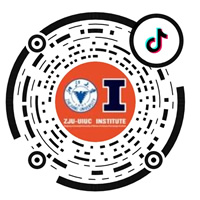May 1st, Zhejiang University/University of Illinois at Urbana-Champaign Institute PhD candidate QIN Pengfei (Supervisor: Prof. LI Erping) and Zhejiang University doctor Yihao Yang (Supervisor: Prof. CHEN Hongsheng) published a paper titled “Type-I hyperbolic metasurfaces for highly-squeezed designer polaritons with negative group velocity” as co-first author in Nature Communications. In the paper, they propose a novel concept of hyperbolic metasurface which provide a new platform for polaritons photonics. In addition, associate professor WANG Zuojia from Shandong university, professor ZHANG Baile from Nanyang technological university and professor CHEN Hongsheng from Zhejiang university are corresponding authors.



Type-I Hyperbolic Metasurface
Electronic devices and photonic devices like satellite communication, radar, sensing system which closely related to our life are inseparable from the interaction between electromagnetic field and matter. The cutting-edge research field ‘control of electromagnetic field by new electromagnetic materials’ will be the key technology for future information technology. Recently, researchers have reported that hyperbolic polaritons in van der Waals materials and metamaterial heterostructures provide unprecedented control over light-matter interaction at the extreme nanoscale. As a representative naturally hyperbolic material, the polar dielectric material of hexagonal boron nitride (h-BN) supports hyperbolic phonon-polaritons at two separated Reststrahlen bands in the mid-infrared regime. Besides, the phonon polaritons in the h-BN have several advantages, such as high confinement, ultra-short wavelength, and low loss compared with metal-based surface plasmons and graphene plasmons, which makes it an excellent candidate for nano-photonics. The h-BN holds a promising future in applications for sub-diffraction imaging (such as hyperlens), enhanced light-matter interaction, super-Planckian thermal emission, and so forth. However, the h-BN only works as a hyperbolic material in the narrow Reststrahlen frequency bands, beyond which no phonon-polaritons exist.
In this work, researchers propose a new platform - Type-I hyperbolic metasurface with anisotropic magnetic responses to engineer polaritons at will in frequency and space. The metasurface consists of a single-layer coil array and is characterized by a negative/positive out-of-plane/in-plane permeability. The designer polaritons on the metasurface carry ultra-high momenta and ultra-large negative group velocities. By directly imaging the near-field distribution at microwave frequencies, they experimentally observe a cone-like dispersion in reciprocal space, with a remarkably high effective relative refractive index up to 60 and a slow group velocity down to c/400 (c is the speed of light in vacuum). Taking advantage of the high effective index, they experimentally achieve an entire integrated polariton circuit with a footprint shrunken by almost 3600 times, substantially exceeding the conventional waveguide circuits (typically a few times).
This work could provide a new platform for artifical hyperbolic materials and polariton photonics. In the field of applications, the hyperbolic metasurface is expected to be used in the fields of ultra-miniaturized waveguide circuit, slow light devices, wireless energy transmission and low threshold terahertz free electron laser.
Dr LIN xiao, a postdoctoral fellow at Nanyang technological university, also make an important contribution to this work. This work is funded by the national natural science foundation of China outstanding youth fund program and general fund program.
Link:https://www.nature.com/articles/s41467-019-10027-0







